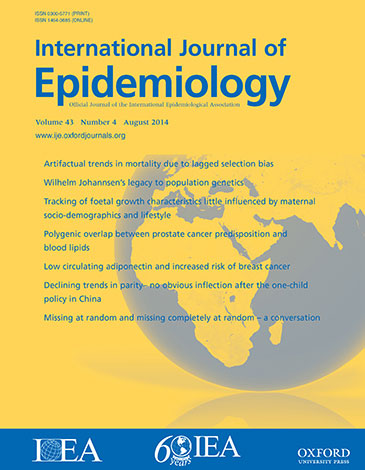Relationship between shingles and coronavirus disease 2019: a self-controlled case series study
IF 5.9
2区 医学
Q1 PUBLIC, ENVIRONMENTAL & OCCUPATIONAL HEALTH
引用次数: 0
Abstract
Background Although some studies suggest an increased risk of shingles following coronavirus disease 2019 (COVID-19), caused by severe acute respiratory syndrome coronavirus 2 (SARS-CoV-2) infection, no research has examined this relationship in real-world clinical settings. We aimed to investigate the association between shingles and COVID-19 by using a Japanese inpatient and outpatient claims database. Methods We identified patients with COVID-19 from 1 January 2020 to 30 January 2023 by using a Japanese inpatient and outpatient claims database. We also identified those who developed shingles and received antiviral drugs within 90 days before or after their COVID-19 diagnosis. Using self-controlled case series methods, we evaluated the relationship between shingles and COVID-19. We calculated the incidence rate ratio (IRR) [95% confidence interval (CI)] for shingles during the buffer period (days –35 to –7), pre-exposure period (days –6 to 0), and risk periods of the first and second, third and fourth, and fifth and sixth weeks following COVID-19 infection compared with a control period outside these intervals. Results Among 399 381 patients with COVID-19, 558 were diagnosed with shingles. The IRR was significantly elevated during the first and second (5.1, 95% CI 3.9–6.6), third and fourth (1.7, 95% CI 1.2–2.5), and fifth and sixth weeks (1.5, 95% CI 1.0–2.3) compared with a control period. Conclusion This study of a Japanese inpatient and outpatient database reveals a relationship between shingles and COVID-19, indicating that shingles may be a characteristic of the virus and highlighting the need for varicella-zoster vaccination alongside SARS-CoV-2 in the COVID-19 era.带状疱疹与2019冠状病毒病的关系:一项自我对照病例系列研究
虽然一些研究表明,由严重急性呼吸综合征冠状病毒2 (SARS-CoV-2)感染引起的2019冠状病毒病(COVID-19)后带状疱疹的风险增加,但没有研究在现实世界的临床环境中检验这种关系。我们的目的是通过使用日本住院和门诊索赔数据库来调查带状疱疹和COVID-19之间的关系。方法利用日本住院和门诊索赔数据库,对2020年1月1日至2023年1月30日期间的COVID-19患者进行鉴定。我们还确定了那些在COVID-19诊断前后90天内患带状疱疹并接受抗病毒药物治疗的患者。采用自我控制病例系列方法,我们评估了带状疱疹与COVID-19之间的关系。我们计算了缓冲期(-35天至-7天)、暴露前期(-6天至0天)以及COVID-19感染后第一、第二、第三、第四、第五和第六周的危险期与这些间隔之外的对照期的带状疱疹发病率比(IRR)[95%置信区间(CI)]。结果399 381例新冠肺炎患者中,带状疱疹确诊558例。与对照期相比,IRR在第一和第二周(5.1,95% CI 3.9-6.6)、第三和第四周(1.7,95% CI 1.2-2.5)和第五和第六周(1.5,95% CI 1.0-2.3)显著升高。结论对日本住院和门诊患者数据库的研究揭示了带状疱疹与COVID-19之间的关系,表明带状疱疹可能是该病毒的一个特征,并强调在COVID-19时代需要在接种SARS-CoV-2的同时接种水痘-带状疱疹疫苗。
本文章由计算机程序翻译,如有差异,请以英文原文为准。
求助全文
约1分钟内获得全文
求助全文
来源期刊

International journal of epidemiology
医学-公共卫生、环境卫生与职业卫生
CiteScore
13.60
自引率
2.60%
发文量
226
审稿时长
3 months
期刊介绍:
The International Journal of Epidemiology is a vital resource for individuals seeking to stay updated on the latest advancements and emerging trends in the field of epidemiology worldwide.
The journal fosters communication among researchers, educators, and practitioners involved in the study, teaching, and application of epidemiology pertaining to both communicable and non-communicable diseases. It also includes research on health services and medical care.
Furthermore, the journal presents new methodologies in epidemiology and statistics, catering to professionals working in social and preventive medicine. Published six times a year, the International Journal of Epidemiology provides a comprehensive platform for the analysis of data.
Overall, this journal is an indispensable tool for staying informed and connected within the dynamic realm of epidemiology.
 求助内容:
求助内容: 应助结果提醒方式:
应助结果提醒方式:


